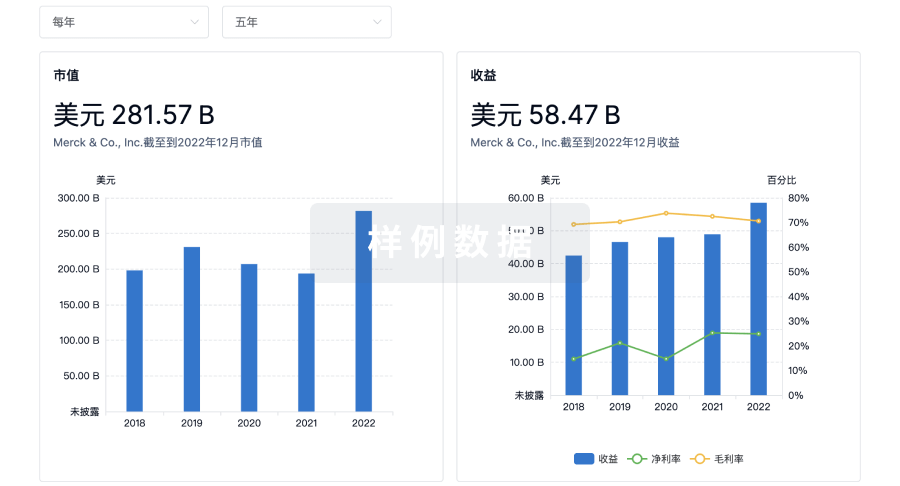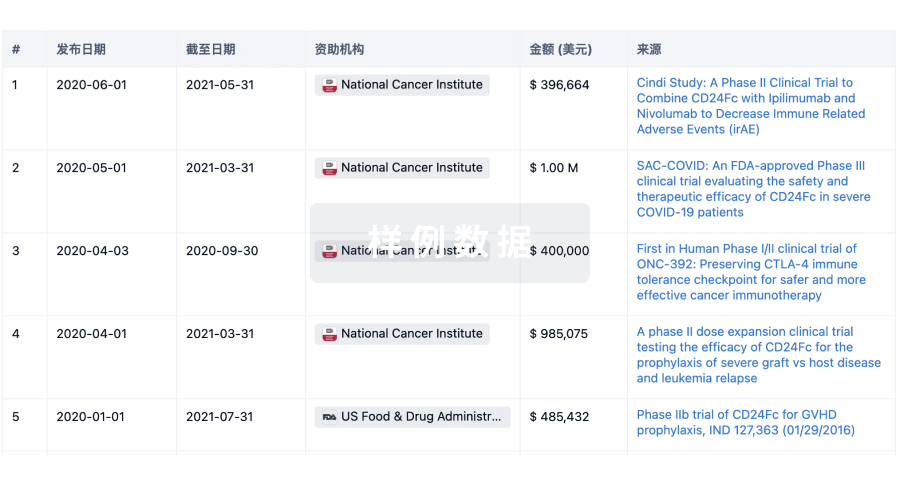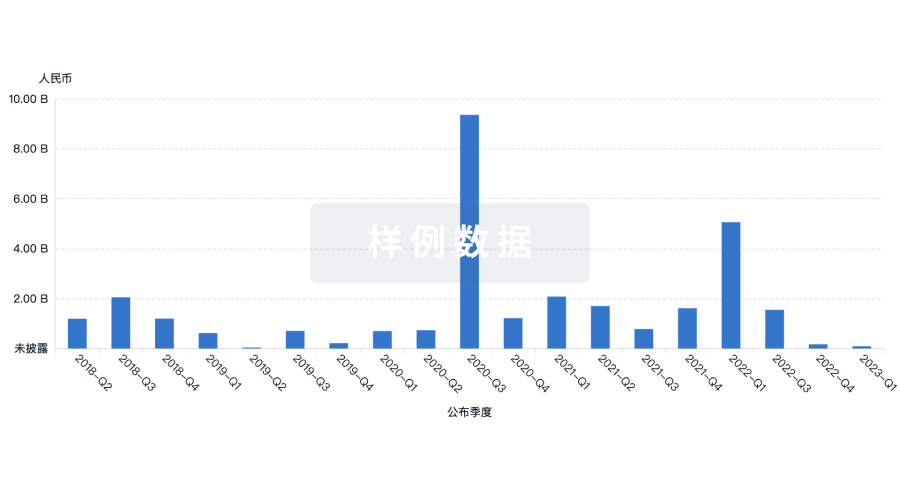预约演示
更新于:2025-08-29

Peking University Shenzhen Graduate School
北京大学深圳研究生院|教育|2002|中国广东省
北京大学深圳研究生院|教育|2002|中国广东省
更新于:2025-08-29
概览
标签
肿瘤
神经系统疾病
感染
小分子化药
三特异性抗体
蛋白水解靶向嵌合体(PROTAC)
疾病领域得分
一眼洞穿机构专注的疾病领域
暂无数据
技术平台
公司药物应用最多的技术
暂无数据
靶点
公司最常开发的靶点
暂无数据
| 排名前五的药物类型 | 数量 |
|---|---|
| 小分子化药 | 10 |
| 三特异性抗体 | 2 |
| 蛋白水解靶向嵌合体(PROTAC) | 2 |
| mRNA | 1 |
| 合成多肽 | 1 |
关联
18
项与 北京大学深圳研究生院 相关的药物作用机制 Phosphodiesterases, 3',5'-cyclic nucleotide (PDEs) inhibitors [+1] |
在研机构 |
非在研适应症 |
最高研发阶段批准上市 |
首次获批国家/地区 美国 |
首次获批日期1984-08-30 |
靶点- |
作用机制- |
在研机构 |
原研机构 |
在研适应症 |
非在研适应症- |
最高研发阶段临床阶段不明 |
首次获批国家/地区- |
首次获批日期- |
作用机制 CD3刺激剂 [+2] |
在研机构 |
原研机构 |
在研适应症 |
非在研适应症- |
最高研发阶段临床前 |
首次获批国家/地区- |
首次获批日期- |
100 项与 北京大学深圳研究生院 相关的临床结果
登录后查看更多信息
0 项与 北京大学深圳研究生院 相关的专利(医药)
登录后查看更多信息
2,185
项与 北京大学深圳研究生院 相关的文献(医药)2025-12-31·OncoImmunology
Leptin decreases Th17/Treg ratio to facilitate neuroblastoma via inhibiting long-chain fatty acid catabolism in tumor cells
Article
作者: Liu, Jiabin ; Zhuo, Yue ; Zhang, Weixin ; Miao, Lei ; Wang, Hai-Yun ; Guo, Huiqin ; Li, Meng ; Zhuo, Zhenjian ; Tang, Jue ; He, Jing ; Li, Di
The exploration of therapeutic targets in neuroblastoma (NB), which needs more attempts, can benefit patients with high-risk NB. Based on metabolomic and transcriptomic data in mediastinal NB tissues, we found that the content of long-chain acylcarnitine (LCAC) was increased and positively associated with leptin expression in advanced NB. Leptin over-expression forced naïve CD4+ T cells to differentiate into Treg cells instead of Th17 cells, which benefited from NB cell proliferation, migration, and drug resistance. Mechanically, leptin in NB cells blunted the activity of carnitine palmitoyltransferase 2 (CPT2), the key enzyme for LCAC catabolism, by inhibiting sirtuin 3-mediated CPT2 deacetylation, which depresses oxidative phosphorylation (OXPHOS) for energy supply and increases lactic acid (LA) production from glycolysis to modulate CD4+ T cell differentiation. These findings highlight that excess leptin contributes to lipid metabolism dysfunction in NB cells and subsequently misdirects CD4+ T cell differentiation in tumor micro-environment (TME), indicating that targeting leptin could be a therapeutic strategy for retarding NB progression.
2025-11-01·JOURNAL OF AFFECTIVE DISORDERS
Association between marijuana and depression: Exploring the mediating role of environmental pollutants
Article
作者: Zheng, Zi-Yi ; Ji, Mei-Xian ; Wei, Kai ; Zhou, Jing-Xuan ; Liu, Xiong-Bo
BACKGROUND:
Depression is a widespread mental health disorder that significantly affects both individuals and society. This study aimed to examine the association between marijuana use and major depression among U.S. adults, and to investigate whether environmental pollutants mediate this relationship.
METHODS:
We analyzed data from 21,304 adults aged 20-59 in the 2005-2018 cycles of the National Health and Nutrition Examination Survey (NHANES). Depressive symptoms were measured via the Patient Health Questionnaire (PHQ-9). Urinary polycyclic aromatic hydrocarbons (PAHs) and volatile organic compounds (VOCs) were measured as mediating variables. Weighted multivariable logistic, linear regression and weighted quantile sum regression models were used to assess associations. Mediation analysis was conducted to estimate indirect effects of these pollutants.
RESULTS:
Current marijuana use was associated with increased odds of major depression (adjusted OR = 1.99; 95 % CI: 1.57-2.50), independent of sociodemographic, behavioral, and clinical confounders, including tobacco and other drug abuse. Combined marijuana and tobacco use showed the highest risk (adjusted OR = 3.05; 95 % CI: 2.48-3.75). Mediation analysis identified three PAH metabolites-1-hydroxynaphthalene, 2-hydroxyfluorene, and 3-hydroxyfluorene-as partial mediators, accounting for 10.6-17.4 % of the association between marijuana use and depressive symptoms.
CONCLUSIONS:
Marijuana use is positively associated with depressive symptoms among U.S. adults, and this association is partly mediated by exposure to specific PAHs. These findings underscore the need to consider environmental pollutant exposure in studies of substance use and depressive symptoms.
2025-11-01·ENVIRONMENTAL RESEARCH
Engineering functional hydrochar via digestate-mediated carbonization: Mechanistic insights into structural evolution and nitrogen doping
Article
作者: Zhang, Chao ; Liu, Qianyi ; Shao, Mingshuai ; Xu, Qiyong ; Chen, Qindong ; Wang, Xue ; Wang, Zechen
As a byproduct, digestate liquid derived from food waste anaerobic digestion (DFW) offers a promising hydrothermal medium due to its inherent alkalinity, high nitrogen content, and abundance of reactive organic species. Although DFW has proven effective in improving hydrochar characteristics, its mechanistic impact, especially on the often-overlooked non-carbonized fraction, remains insufficiently understood. This study systematically investigates the feedstock- and solvent-dependent mechanisms of hydrothermal carbonization (HTC) using structurally representative biomass precursors in both deionized water and digestate liquid. Combustion analysis revealed that interactions between digestate-derived proteins and carbohydrates enhanced the reactivity of hydrochars, reducing ignition temperatures by 10 % for lignin and 13 % for cellulose. A multiscale approach combining FTIR-XPS analysis showed that digestate promoted depolymerization and decarboxylation, resulting in higher carbon content (∼69 %) and lower O/C ratios (<0.2). Simultaneously, digestate facilitates the formation of oxygen-rich surfaces and promotes nitrogen doping (>3.0 %) while enhancing the structural integrity of the carbon core. Mechanistic differentiation revealed solvent-specific pathways: DFW promoted keto-enol tautomerism, whereas sugars in deionized water primarily followed furfural-type degradation. Both pathways contributed to carbon microsphere core formation. Notably, digestate reduces feedstock-dependent variability in hydrochar composition and structure. By combining real-waste media with model precursors, this study reveals new insights into hydrochar structural evolution and offers a scalable strategy for producing tailored carbon materials from heterogeneous biomass.
33
项与 北京大学深圳研究生院 相关的新闻(医药)2025-07-17
深圳湾实验室、深圳医学科学院、北京大学深圳研究生院Andrew Lee团队与上海思珀诺因生物科技有限公司的研究人员近日与上海交通大学医学院附属上海儿童医学中心合作,获准开展全球首例采用非病毒载体全长抗肌萎缩蛋白(FL-dystrophin)基因疗法治疗杜氏肌营养不良症(DMD)的临床试验。这也是国际上首个利用细胞外囊泡递送平台将基因治疗药物导入人体的研究者发起临床试验(IIT)。该项目名为“基于工程化细胞外囊泡(EV)的mRNA新型平台治疗杜氏肌营养不良症”,旨在通过工程化细胞外囊泡递送FL-dystrophin mRNA,评估其对DMD患者的安全性、耐受性及初步疗效,为患者提供更安全、高效的基因治疗选择。01研究背景和科学依据杜氏肌营养不良症是一种由X染色体上抗肌萎缩蛋白基因突变引起的致命性遗传病,全球每3500名男婴中即有1例发病。患者因肌肉细胞膜稳定性丧失导致进行性肌无力,通常在青少年期失去行走能力,并因心肺衰竭早逝。目前该病尚无治愈方法,当前疗法如ASO或AAV载体基因疗法虽能部分恢复抗肌萎缩蛋白表达,但仍面临局限性:1)缺乏治愈所有突变类型的普适性;2)单次治疗的AAV可能激活固有免疫应答和适应性免疫应答而引发多器官衰竭,尤其是肝、心、肺损伤甚至肝衰竭死亡;3)AAV治疗的临床案例显示,其毒性呈剂量依赖性,且与患者基线状态(如肝病)密切相关。此外,2025年6月15日,美国FDA批准的唯一用于DMD的基因治疗药物Elevidys因多例AAV肝毒性导致患者死亡而被从市场上撤下。这些事件强调需要开发新的安全的非病毒治疗策略来治疗肌肉萎缩症。02mRNA治疗的优势mRNA疫苗在抗击COVID-19大流行方面获取的成功引起了人们对mRNA疗法的关注。mRNA疗法是指mRNA直接在细胞内诱导目标蛋白质的合成,相较于AAV疗法具有低毒性和低免疫原性的优势。此外,mRNA疗法具有良好的可塑性,可被用于编译任何蛋白质,因此借助mRNA疗法可直接补充DMD患者体内缺失的肌营养不良蛋白,进而恢复肌纤维完整性,解决肌肉再生能力丧失和线粒体功能障碍的困难问题。许多临床和临床前研究发现AAV作为基因药物的载体具有诸多缺陷,例如可引起肝毒性、神经、血液损害、血栓性微血管病所致的肾功能衰竭和急性肝衰竭死亡等不良反应。这些不良反应限制了AAV疗法应用于DMD疾病治疗的研究和发展亟需创新开发更为安全有效的治疗手段。mRNA疗法在DMD疾病的治疗中可以克服ASO和AAV等疗法的局限性,但要将其真正应用到临床还需要安全有效的递送载体。03创新EV mRNA平台为了突破这一瓶颈,研究团队独辟蹊径,将目光投向了工程化细胞外囊泡(EV)这一天然的纳米级递送载体。工程化EV作为细胞分泌的一种微小囊泡,具有卓越的生物相容性和低免疫原性,能够轻松跨越多种生物屏障,将携带的遗传物质精准递送到目标细胞。研究团队长期致力于药物递送领域的研究,基于团队之前的EV的治疗应用的临床前和转化工作的坚实基础,在优化EV介导的mRNA递送策略方面具有丰富的研究经验。EV mRNA平台通过以下创新设计突破技术瓶颈:1)全长蛋白质补充:通过EV递送FL-dystrophin mRNA,直接修复基因缺陷,打破了传统疗法因截短蛋白质功能不全的局限性;2)非病毒递送系统:与AAV载体可引起免疫原性和心脏毒性不同,没有病毒毒性风险,首个采用非病毒载体EV开展治疗包含DMD在内的罕见病的临床试验;3)广谱适用性:适用于所有突变类型,包括无义突变与移码突变患者;4)可重复给药性:突破AAV疗法由于免疫原性反应单次治疗限制,实现根据患者的恢复情况调整递送mRNA剂量的重复给药策略。基于良好的临床前数据,团队决定正式启动IIT研究,期待该试验的成功能够为DMD疾病的基因疗法提供更多关于安全性和有效性的数据。04合作与支持本试验与上海交通大学医学院附属上海儿童医学中心联合开展,获上海思珀诺因生物科技有限公司专项基金支持。
信使RNA基因疗法疫苗临床研究核酸药物
2025-02-08
·智药邦
北京大学信息工程学院田永鸿、陈杰团队一直致力于推动AI for Science的发展,前期工作曾入围2022年度戈登贝尔特别奖,与美国阿贡国家实验室、橡树岭国家实验室团队在世界舞台上角逐这一超级计算机领域的国际最高奖项,团队于众多世界级顶尖强队中脱颖而出名列前茅,展现出中国人工智能在计算集群和科研创新领域的全球顶尖水平。
2025年1月17日,田永鸿、陈杰团队联合广州国家实验室周鹏研究员,在Nature Machine Intelligence上发表文章A unified evolution-driven deep learning framework for virus variation driver prediction,再次展现AI助力自然科学研究范式革新的巨大潜力。
研究亮点:
1,探讨了如何定制化蛋白质语言模型以适配进化预测任务,提出了定制化预训练策略和数据集,为蛋白质语言模型预训练与下游任务之间的权衡提供了研究新视角;
2,从进化论角度凝练了病毒进化的两大本质问题,从而通过“微弱突变放大”和“稀少有益突变挖掘”两个创新设计实现了跨病毒类型和跨毒株类型的通用预测,涵盖新冠、流感、寨卡和艾滋病病毒,实现了Science和AI架构的高度融合;
3,突变所处相互作用网络的全面重建模块(包含动态粒度注意力机制以挖掘motif模式)以及提出的多任务焦点损失函数适用于蛋白质通用体系,具有进一步拓展用于各类蛋白质功能预测及蛋白质定向进化的可能;
4,实现了不同尺度的病毒进化预测,未来可与疫苗和蛋白类药物设计流程相结合,有望提升设计效率和设计可控度。
在自然界,物种多样性与生物体内承载功能的蛋白质相互约束,这是因为蛋白质作为功能的载体决定了生物的性状,而这些性状经过选择压力筛选后形成了当下的物种多样性分布结果。立足达尔文进化论及表观遗传学持续新研究的角度,生物演化与环境组成了复杂系统,是与环境的协同演化。受此启发,研究团队基于进化论视角重新审视病毒进化预测难题,提出了解决病毒进化两大本质问题的跨病毒类型、跨毒株类型的通用进化预测模型,为疫苗、药物的快速主动更新以及提高人类对于新发病毒感染的响应速度提供了强大工具,支撑和加速对于物种复杂进化机制的探索。
突变是病毒进化的基石,不同病毒的具体进化历程各有其独特性,但是其共性在于最终的进化结果中几乎都是有害突变占据大多数。从整个进展尺度来看,即使有害突变与有益突变的比例会随物种和环境不同而有所区别,但是有害突变被认为总是远多于有益突变,即有益突变是病毒蛋白进化适应度空间中的极小子集。很自然地,有害突变的高发性使得同一个变异株内难以共存较多的突变,即一个变异株所具有的突变数量与原始型相比往往较少,仅有少数位点会发生突变。因此,团队将上述病毒进化轨迹凝练为病毒进化的两大本质特点:“少数位点突变”(Few-site mutations)和“稀少有益突变”(Rare beneficial mutations)。以上两大进化特点导致了明显的建模难题:“少数位点突变”引起的分子内相互作用网络的变化相对比较微弱,使得神经网络对其直接捕获极其困难,而“稀少有益突变”在数据层面造成了严重的正负样本不平衡问题,这导致精准预测对进化至关重要的稀少有益突变成为巨大挑战。
为此,研究团队提出了进化驱动的病毒变异驱动力预测框架E2VD(图1),通过“微弱突变放大”和“稀少有益突变挖掘”两个创新设计实现了跨病毒类型和跨毒株类型的统一预测。通过面向进化场景的定制化蛋白质大语言模型(国产E级智算平台“鹏城云脑II”256张NPU支撑训练)、突变所处相互作用网络的全面重建模块(包含动态粒度注意力机制以挖掘motif模式)以及提出的多任务焦点损失函数,E2VD在几类关键病毒进化驱动力预测任务上实现了最佳性能,显著且全面超越其他方法(性能提升在7%-21%不等),实验证明了该预测框架对于病毒进化模式的精准捕获,将稀少有益突变的预测精度从13%大幅提升至80%,实现了跨越式精度提升。其可用于灵活定制化组合以预测不同尺度的进化趋势,不仅实现了大流行内部进化轨迹的解释和潜在高风险突变的精准预测,而且实现了对于大流行尺度的宏观进化轨迹预测,重现了病毒在真实世界中的进化路线,为病毒进化机制的解读提供理论性支撑。
图1:E2VD模型架构
此外,E2VD在跨越病毒类型和毒株类型时展现出强大的泛化能力(图2)。研究团队提出鲁棒且避免实验批次效应影响的突变所致病毒适应度变化评估指标,并以此评估了模型在同病毒类型的不同毒株之间以及不同病毒类型之间的泛化表现,E2VD在新冠病毒、寨卡病毒、流感病毒以及艾滋病病毒上展现出理想的泛化能力,始终超越其他方法,未来可进一步拓展至更多传染性病毒,与疫苗和蛋白类药物设计流程相结合,有望提升设计效率和设计可控度。
图2:跨病毒类型和跨毒株的泛化性能
北京大学信息工程学院博士生聂志伟、硕士生刘旭东为该工作的共同第一作者,田永鸿教授和陈杰副教授为共同通讯作者。
入围戈登贝尔特别奖新闻链接:
https://news.pku.edu.cn/jxky/90d276ae5f8441849fd04372fd872154.htm
论文链接:
https://www-nature-com.libproxy1.nus.edu.sg/articles/s42256-024-00966-9
本文转自【北京大学深圳研究生院】公众号
--------- End ---------
感兴趣的读者,可以添加小邦微信加入读者实名讨论微信群。添加时请主动注明姓名-企业-职位/岗位 或 姓名-学校-职务/研究方向。
疫苗
2025-01-07
·漫游药化
本文摘自《我在北大当教授》
杨震,北京大学化学与分子工程学院长江特聘教授,北京大学深圳研究生院化学生物学与生物技术学院院长,杰出的化学家。研究兴趣:复杂天然产物的全合成,包括五味子家族重要天然产物的多样性导向合成与其他小分子的合成,主要方法学或合成策略基石为基于硫脲化学的Pauson-Khand反应(Schindilactone A)、IMDA反应(Maocrystal V、Caribenol A等)以及近期发表的Rh催化方法学合成双四级碳二环体系(Nature Commun.)等。
杨震的童年是孤独的,因父母被批斗,从小受人欺负。1990年代初,杨震在美国斯克利普斯研究所完成了天然紫杉醇的首次人工全合成,轰动世界。正当意气风发之时,杨震在一次实验爆炸中重度烧伤,差点截肢,在医院昏迷了近两周。九死一生,他对生命做了三个承诺:不做坏事、同情、尊重宗教。2001年,杨震回到中国,参与建设北京大学深圳研究生院。
孤独是种力量
和大多数出生在20世纪60年代初的人一样,我童年的记忆多是难以忘却的孤独。
在物质极为匮乏的时代,作为家里第七个孩子,我的出生并没有收获什么祝福。母亲很疼我,三个哥哥和三个姐姐也都疼我,但是深深的孤独感从未离开过我。小时候的我性格孤僻,常常一个人出门转,所以常常走丢。哥哥姐姐对我小时候的记忆就是一个小脑袋从门后面探出来,怯生生地观察外面的世界。后来我养成了自己跟自己说话、自己跟自己娱乐、自己做玩具,什么都是自己的习惯,这整个经历和过程养成了我独自思考的习惯。因为出去玩也好,自己玩也好,我总是自己问自己一些东西,后来我知道这恰恰是思想升华的时候。
图片来源:杨震课题组
我是在沈阳出生的,七岁的时候全家下乡了。爸爸是留日归来的学者,日伪时期在辽宁省丹东市凤城县石桥子中学任教,这段历史后来成了我们全家的痛。由于爸爸当时会说日语,他负责的学校又帮助日本人种粮食,因此,在“文革”期间爸爸吃尽了苦头。
1971年,我们全家从沈阳被遣送回爸爸当初做老师的凤城县。那时候,爸爸经常被批斗。头一天批判他,第二天就批判我,因为批判他的时候我没参加。我不能参加啊!那很惨的!就跟现在看的很多片儿一样,挂着大牌子,揪着头发,戴着砖,我没法看那个画面,所以就跑了。第二天学校就把我揪出来,然后批判我,说我是改造不好的人的子女。
我小时候上学很艰难的,人家走大路,我只能爬山路,因为我要走大路的话就得给买路钱,我要不给,他们就打我。当时我母亲还有些零钱给我,一般她给我五分钱,希望我中午可以买点吃的,但那些钱我很少花,基本上都是买路了。走到那儿把钱给他们,今天就不挨揍,我要是没钱,就不能走那条道。为了躲他们,我习惯走另一条道,真的很恐怖的,狼啊什么的野兽都有。但我胆子逐渐大了起来,后来养成了一个挑战权威、仇视优越感的习惯。正因为我从小受到弱势群体的待遇,我一直同情弱者。从那个时候起,我就觉得弱不一定是软弱,只是人生的一个经历过程,这个感悟对我一生都很重要。一般来讲,我跟任何人相处,只要他不欺负人,我们都是好朋友,一旦他出现欺负人的时候,就碰到我的底线了。慢慢养成的这种独立、刚强、不怕苦的性格,对我整个化学研究生涯有很大的帮助。
单纯专注就好
我是药学院的学生,化学基础并不太好,有机会师从香港中文大学黄乃正院士,我真的很幸运。那时候年轻的我对世界充满好奇,也从来不计较多干活,在实验室里,我愿意帮助任何人做实验。随着时间的推移,我像个神童,搞定越来越多的实验,连黄教授也非常吃惊。当时我身体很棒,喜欢打网球,打球的对手是曾经参加香港公开赛的香港中文大学冠军,我俩每天早晨晨练。我没受过什么专业训练,但是大家都夸我网球水平进步很快,体力好,技术也不错。在香港中文大学的日子过得飞快,成长得也飞快,收获很多,真的很幸福。
当黄教授推荐我到美国斯克利普斯研究所追随当时合成化学界的一代宗师尼克劳(Nicolaou)教授读博士后时,我并没有太多伟大的理想。当时我和太太说,就想去赚两万美金,然后我就回来。刚到美国的时候,我基本上没有什么休息的概念。我是跟着我的实验来睡觉的,就是它几点结束了,我就几点醒。那时候我的生活简单得一塌糊涂,人家买车我不买,我骑自行车,一方面可以锻炼身体,另一方面省钱。我自己因为是穷孩子,什么都会做。我做饭很好吃,自己带饭很省钱,基本上一个星期花不了多少钱。人家到美国先去学习英文,我哪儿也不去,天天在实验室干活。后来他们问我为什么不学英文,我说,在美国说英文有用吗?那时候我还有很多小时候的心理阴影,有时候我觉得自己像个奴隶。我一心一意想着两件事:第一是别被老板提前炒鱿鱼,第二是挣完两万美金我就回家。
那时在实验室里,任何人需要帮忙都愿意找我,我无代价地给他们干活,帮他们备料,做各种各样的反应。我当时在想,我时间不多,必须要学到我希望学到的东西。怎么学?跟人家讲“你教我”?这样是不会有人教我的。那怎么办?“我帮你干活啊!”这个是最有效的,因为他要想让你干活,他必须把真的东西告诉你,否则你把它就给做坏了,这个时候你学到的知识就全是真正的好知识。
我刚到美国时和导师之间的关系很微妙。第一天去研究所见导师时,他搂着我脖子,很亲切,随后的两个月,他就再也不理我了。我问周围的同事:“教授咋不跟我说话呢?”同事告诉我,等我做出东西来,教授才会理我。我后来理解此“冷处理”是教授的一种特殊管理方式,并且逐渐接受这种会让人去思考的方式。但在当时,刚到异国他乡的我觉得很受伤,所以,我在实验室有些古怪的行为。比如:实验室经常拍照片,我从来不参加。因为我觉得既然你不喜欢我,我就不跟你照相。好几次实验室的秘书都跟我说:今天又照相,你能不能不走?我还是溜走了。回想起来,青年时代的我幼稚而倔强,所以今天我也可以理解年轻人,哪怕有些小古怪也没关系,我也无条件地爱他们。
图片来源:杨震课题组
世界的新星
20世纪60年代,美国政府曾经有两个诺言:一个是关于登月的阿波罗计划,另一个是征服肿瘤。这两个科学诺言当时震惊世界。阿波罗登月70年代初就实现了,但征服肿瘤一直遥遥无期。人是由受精卵发育而来的二倍体生物个体,称为二倍体。细胞的复制过程遵循2、4、8、16……法则,可用2n表示。细胞复制过程涉及一种叫微管蛋白的关键物质,简单来说,微管蛋白在细胞中的功能就像房屋中的砖块,细胞的复制是将这些“砖块”有序地重组,构建成两个独立的细胞。人体正常细胞的复制过程可控,而肿瘤细胞则是一类“细胞复制”无法控制的癌变细胞。从细胞复制的角度来讲,如果能够阻止“砖块”的解聚,是不是就影响房间的分化?如果找到外来物种能有效地抑制“肿瘤细胞的复制”机制,不让这类“砖块”解聚,那事实上我们就可以抑制肿瘤的扩散了。然后再通过其他的化学手段、治疗手段,就可以抑制或治愈肿瘤了。
1962年,美国植物学家巴克莱(Arthur S. Barclay)采集了加州杉树(Pacific yew, Taxus Brevifolia)的树皮。1964年,美国北卡罗来纳大学的沃尔(Monroe E. Wall)和瓦尼(Mansukh C. Wani)教授从树皮中分离得到具有抗肿瘤活性的紫杉醇。1971年经X光衍射分析确定了紫杉醇的结构。但由于它的溶解度不好和分离上的困难,他们没有继续研究该物质,并将它放到美国国家癌症研究所(NCI)的化合物库里。1979年,美国纽约叶史瓦大学(Yeshiva University)的霍维茨(Susan B. Horwitz)教授发现紫杉醇是通过抑制微管蛋白的解聚实现它的抗肿瘤效果。从机制上来讲,紫杉醇正是人们一直在寻找的物质。人类没法模拟天然产物,这个是进化的结果。
紫杉醇的发现是人类药物发展史中的一次伟大发现,给人类治疗癌症带来了曙光,并启示人类发现更加有效的抗癌药物。尽管我是药物学毕业的学生,但是对这种时髦的东西不怎么感兴趣,不知道紫杉醇是什么东西,只知道很重要,能治疗癌症,但不知道它在药物研发历史中有如此重要的地位。因为紫杉醇不仅是科学家打开生命大门的一把钥匙,而且还是医院治疗癌症的一线药物——肿瘤药目录表里第一个抗癌药就是紫杉醇。
当时世界各大公司、著名的研究室,都在纷纷竞争来实现这个分子的全合成。1992年我去美国,正好赶上这个末班车。当时很多实验室,其中包括斯坦福大学和哥伦比亚大学的课题组,宣称他们即将完成紫杉醇全合成。我的导师当时介入该分子的全合成研究不久,因此,需要更多的人手参加此项工作。于是,他问我想成名吗,我说想,他说做这个就能成名,我说,好,谢谢。
六个月后,我奇迹般地将紫杉醇的模型做出来了。最终,我们经过近两年的日夜奋斗,完成了天然紫杉醇的首次人工全合成。这项工作轰动了世界,杨震这个名字也被很多人熟悉起来。好多人都说,这个杨震是过去沈阳药学院的那个杨震吗?是不是同名同姓的?当我做完紫杉醇的时候,有一天导师把我拉到办公室,说:“你不是一直想跟我照相吗?来吧!”
九死一生问苍天
紫杉醇将我变成举世瞩目的新星,1996年我又完成了抗癌药埃博霉素的首次全合成,1998年完成了抗神经毒素Brevetoxin A 的首次全合成。等我做完这三个复杂天然产物,我觉得我已经领悟了合成化学。那个时候“人类基因组”即将解密,当时“化学基因组织”的发起人之一哈佛大学的施莱伯(Schreiber)教授,讲人类基因组解密之后,两万多个基因如果能被有效调控,人类就不会有疾病的困扰了。当时我一听,觉得这才是我的梦想。
1994年做完紫杉醇后,我开始骄傲起来。好多次教会请我去参加他们的聚会,一次我开玩笑说:“上帝,你就别挂在那儿啦,也不干活!下来干活吧,像我一样。”
不到半年,在一次实验过程中不幸发生了爆炸,当时我重度烧伤,达到30%以上,在医院昏迷了近两周。从医院出来之后,我全身的皮肤全移动了,因为30%的烧伤我需要植两次皮。第一次是拿下我身体30%的皮用来保护我身体被烧伤的部位,防止感染,而第二次植皮才用于治疗。
当时医生说我要截肢,我问截几个肢,他说可能截我的右手。我想了一下,说没有右手的话,有左手还可以活。后来有一天我的身体出现了感染,医生就说可能要截双肢。当时我想了半天,不知道没有双手的人该怎么生活,我说那我就不活了。然后医生说,这就看造化了。多亏我身体好,要是身体不好就活不下来了。
烧伤病人治疗上与一般的病人不同,烧伤病人不能输液,因为一输液就水肿。为了避免水肿,烧伤病人需要输高浓度的生理盐水,让你脱水。那个高浓度生理盐水的脱水过程真叫人难熬,我的嘴和舌头当时干得像锯锉一样。
起初的四周时间,我因为全麻醉移植后太痛,基本上都是在做梦,梦见在水里或者是在冰窖里,就是想喝水。我太太那时候天天给我拿纸蘸水点在嘴唇上。因为身体素质很好,到最后恢复过来,胳膊也没截。恢复期间他们也很佩服我,医生问我有什么梦想,我说我还想回实验室,他说我得配合他,因为我做实验要用我的手。
图片来源:杨震课题组
当我手背上的皮肤刚愈合时,他为了不让手背结痂,就用胶带把手掌和手指头缠成拳头状,缠到一定的时候他一使劲,把关节上所有的皮重新打破,血都喷了出来,整个纱布、胶带全是血。就这样,他让我手指的关节部位又复活了。
有个德国的女护士,我很感激她。她每次给我做处理的时候,把皮撕开之前她就先哭了,说:“你不是想回到实验室吗?求你忍住,对不起、对不起。”很多时候,我总是忙着安慰她,忘了一些痛。
当时胳膊是三度烧伤,胸和脸是二度烧伤,耳朵都烧没了,后来做了几次手术才得以恢复。很多人不相信我有这样的经历,我跟别人讲这个的时候,他们就让我好好编,我跟他们说这是我受过的磨难。
我当时出院后是不需要再工作了,因为我拿到了美国的终身残废保险。看完那封信之后我流泪了,当即就把信撕掉了。我儿子当时很小,才九岁,他说:“爸,那很多很多钱呢!”我当时跟他说:“不能要这个!你爸不仅不能靠别人养活,而且还要养活别人。”这对他后期性格的形成影响很大。我儿子很刚强,很自立,我们根本就没有管过他,他自己成长得很好。他本科在康奈尔大学学生物,在加州大学圣地亚哥分校读脑神经生物学博士,现在在该校做博士后。他是很优秀的小伙子,他见证了我整个的过程,这是他生命的营养。
在这个九死一生的过程中,我的灵魂得到了一次提升,小时候的那些仇恨在这个过程当中全部被清洗掉了。
图片来源:杨震课题组
从那以后,我对生命有三个承诺。
第一个是不会再做坏事。我可以不做好事,但我绝不做坏事。我不能说我不犯错误,但我不会主动去犯错误,更不会报复、陷害、做偷抢之类的事情。
第二个就是同情。我早期对吸毒人员很不尊重,看不起他们。我从医院出来之后,用了吗啡,但要戒掉吗啡的时候,那个痛苦很难控制。从那以后,我就对所有的吸毒人员有了重新的认识,他们是一群失落的人,不应该被歧视。我改变了很多这种以前的想法。
第三个就是尊重宗教。尽管出身不太好,但我一直努力向上。我学习好、听话,反正在学校里头,什么事情我都是努力去做。以前我对宗教是反对的,也没工夫去学,带有很大的偏见。从那以后我对宗教不评论,也不反对。
我在病床上痛不欲生的时候,医院里很多医护人员来探望我,他们以一种仰慕英雄的目光注视着我,表达他们的感激。因为我的导师告诉他们我是“合成紫杉醇抗癌药的英雄”。
许多个深夜痛彻心扉的时刻,我需要吗啡才可以挺过去。后来医生告诉我,对烧伤病人的伤害70%来自于病人精神上的痛苦,30%才是伤痛引起的,因此,病人的休息和睡眠很关键。带着这个信念,我积极配合治疗,努力睡觉,恢复得很快,半年后基本上不需要用纱布了。
后来这家医院里一旦遇到需要心理战的人,他们就去跟那些人说:“曾经有个博士很厉害啊,人家很坚强,配合医生的治疗,恢复就很快啊,人家已经又回到实验室工作了!什么叫博士啊,就是有梦想的人!”
我知道是医院里的药救了我的命。在医院里,当我痛得又蹦又跳时,一看到护士拿着装有吗啡的针,还没有给我打呢,我就开始安静了,那个时候我才知道药是多么重要。
多少次我安静下来,内心都感慨这神奇的世界。上天啊,我该如何回报这救命之恩?忽然间我懂了,上天用这么艰难的方式,赋予了我一个伟大的梦想:去做药的研发,以此去回报这世界的救命之恩。
我立志做药,这个理念本身就是回报吧,选择做药救人,这是我生命的最高境界!于是,我选择了放弃眼前已经让我赫赫有名的领域,重新开始进入一个新领域,去哈佛组建自己的实验室,开展化学生物学研究,开发药物,拯救病痛中的人们。
离开哈佛,跟随林建华回家
到了哈佛,我成为哈佛大学医学院化学与细胞生物学研究所的研究员,率先开展了基于活性天然产物的结构多样性导向的组合合成研究。很快实验室就产生了一些抗癌和抗病毒药物的先导化合物。后来华尔街的投资人来找我,说我做得不错,大家很喜欢我,何大一(戴维何)愿意跟我一起开公司。我说好啊,但是我真对社会很不了解,我没钱。他说我不用投钱。我说那怎么合作公司。他说他们出钱,我做。我说做赢了,行,做输了,我拿什么赔?他说我不用赔。
我当时才意识到美国潜在的魅力,你可以靠能力去吸引资本。何大一听说我不错,各方面、人品都挺好的,然后他就说我们一块做公司吧。我就跟他在纽约创建了抗病毒药物研发公司,我也成为该公司的五位发起人之一。很幸运,我一直跟他干了八年多,我们俩很好。
到哈佛医学院工作是我生命中莫大的幸运。在那里,我使用世界上最先进的仪器设备来从事科研工作,遇到了最优秀和最聪明的学生,见到了梦寐以求的科学大师并能亲耳聆听他们的演讲。但随着时间的推移,我开始渐渐感到孤独。当时中美之间的知识产权纠纷带给我许多无形的困惑和压力。我一直在想,一个民族不强大,你在哪儿都一样。我就跟尼克劳教授讲我现在很不开心。
2001年,时任北大化学院院长、现任北大校长的林建华校长请来访的尼克劳教授帮忙推荐做有机合成的年轻人回北大任职。尼克劳教授就推荐了我,他找我说:“你们中国的哈佛需要人,你愿意回去吗?”林建华校长也问我:“你愿意回来?”我说:“我愿意!”他说:“为什么呢?”我说:“吃了这么多苦,就这么待在美国,不甘心。”所以我回来了,义无反顾。
我早期回来的时候,我跟何大一的公司每年给我的北大实验室十万美金,整整七年,支持我们实验室运行。与何大一等人的接触教会了我爱惜人才。我早期在北大的一些学生一拿到美国高校的录取通知书之后,就经常不在实验室工作了。为什么?他们说要去做家教,挣钱买机票,因为他们当中的一些人来自农村。我知道之后就说你们不用再挣钱了,我给你们买机票的钱。因此,一些早期学生的机票都是我买的。人生很多时候就是缘分。
回国后每天追剧、跑步是我的娱乐活动。追剧是因为没过多的时间去接触现实社会,希望通过看电视剧来学习新语言、新概念,增强与学生沟通的能力。我也喜欢帝王片,最近又看了《康熙王朝》和《武则天》,希望通过电视剧了解历史。有趣的是在自己年龄的不同阶段,看这些史剧的感受也不同,常常发现对历史人物有全新的认识。《武则天》里面的一句歌词我很喜欢:“回头看是善是恶,还是千古的迷惑。”
回来之后我就到深圳建设北京大学深圳研究生院,早期跟林建华一起戴着安全帽建校区,和吴云东院士、邓宏魁等一起开始了创业一样的生涯。我们建了一个化学生物学实验室,后来变成学院,现在又变成国家重点实验室,一步一步地推进。事实上这是筑梦的过程,也是必然的结果。
我尊重海闻,尊重吴云东,他们都是有梦的人,不是机会主义者。我骨子里头也是天生的爱国主义者。
我很认同一句话——跟国家和民族一起爬坡。我当时觉得国家没钱,就像我们家很穷,但是“儿不嫌母丑,狗不嫌家贫”。回国参加建设,是我们这代知识分子无比重要的责任,也是无上的荣光。
深圳真的很好,早晨醒来之后吃饭,然后就到办公室,中午太太就做好饭了,吃完了休息一会,一直工作到晚上七八点钟,然后回家吃饭。深圳给我一种很像加州的感觉,没有那种地域的文化,大家都很平等。从办事效率来看,深圳在中国是最好的,它没有官气,你能明显感觉到,官员是跟你同步的,真是跟你同甘苦,很多事情让人很感动。
北大深圳是学者筑梦的地方。今天我们拥有了“省部共建肿瘤化学基因组国家重点实验室”,深圳唯一从事基础研究的国家重点实验室。我很感谢林建华、海闻和吴云东对我的支持和鼓励。我们的梦想是做出中国第一原创新药,一个伟大的民族不能老借助世界的文明来发展自己,中国要对人类做贡献。这个梦能不能实现我不知道,因为做药事实上是一个建立在科学上的机遇,你就算再努力,有些时候你未必有这个幸运。做药的过程是个统计学,人多了,总会有人有好运。
好多人都说,你怎么每天都是这么激情满怀的?我就说因为周围的人让你不得不充满激情,他们给你永远品味不完的精神食粮。我要再提一下我的好朋友,也是早期创建我们新药研发平台的著名生物学家邓宏魁,他是个angel(天使),为科学而生,在自己世界里活着。我的人生很幸运,一路走来让我结识了许许多多值得为他们骄傲的人。事实上,我只是一个很普通的人,通过与这些杰出的人士结识,我的人生品位确实提高了很多很多。
版权声明
本文摘自《我在北大当教授》一书(知识实验室编著,东方出版中心出版),仅用于学术分享,版权属于原作者。
100 项与 北京大学深圳研究生院 相关的药物交易
登录后查看更多信息
100 项与 北京大学深圳研究生院 相关的转化医学
登录后查看更多信息
组织架构
使用我们的机构树数据加速您的研究。
登录
或

管线布局
2025年09月10日管线快照
管线布局中药物为当前组织机构及其子机构作为药物机构进行统计,早期临床1期并入临床1期,临床1/2期并入临床2期,临床2/3期并入临床3期
药物发现
8
9
临床前
其他
2
登录后查看更多信息
当前项目
登录后查看更多信息
药物交易
使用我们的药物交易数据加速您的研究。
登录
或

转化医学
使用我们的转化医学数据加速您的研究。
登录
或

营收
使用 Synapse 探索超过 36 万个组织的财务状况。
登录
或

科研基金(NIH)
访问超过 200 万项资助和基金信息,以提升您的研究之旅。
登录
或

投资
深入了解从初创企业到成熟企业的最新公司投资动态。
登录
或

融资
发掘融资趋势以验证和推进您的投资机会。
登录
或

Eureka LS:
全新生物医药AI Agent 覆盖科研全链路,让突破性发现快人一步
立即开始免费试用!
智慧芽新药情报库是智慧芽专为生命科学人士构建的基于AI的创新药情报平台,助您全方位提升您的研发与决策效率。
立即开始数据试用!
智慧芽新药库数据也通过智慧芽数据服务平台,以API或者数据包形式对外开放,助您更加充分利用智慧芽新药情报信息。
生物序列数据库
生物药研发创新
免费使用
化学结构数据库
小分子化药研发创新
免费使用
